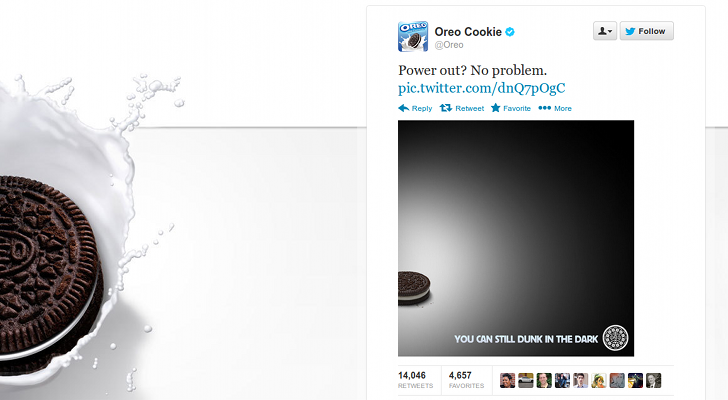Can “real time” marketing work in the pharma industry?
There’s no question that real time marketing is squarely on the radars of modern marketers. Who could forget the famous Oreo Super Bowl tweet, which was retweeted nearly 16,000 times?
With examples like this one, it’s easy to see why the majority of marketers in one CMO Council study plan to increase their use of real time marketing—a strategy in which marketers use current, relevant trends and customer feedback to increase engagement. Real time marketing primes your audiences for timely, relevant communication from your brand. Although it’s not all about social media, it does require a channel for reaching your audience in a timely manner, and most brands are turning to social to achieve this. In the pharma industry, this begs the question: can real time marketing work for pharma marketers?
Social Media and the pharma industry
Between pharma’s strict communication regulations and the struggle just to get content out the door, real time marketing can seem impractical for the pharma industry. And it’s important to note that not all real-time efforts drive real ROI. However, when paired with the right measurement foundation, this strategy can be an effective part of your pharma MCM campaign.
Although FDA regulations make social media tricky territory for pharma marketers, social marketing is becoming more prevalent. Since 2013, the number of tweets by pharma companies has increased by 530%, and a recent study by the Wharton School of Business, Google and McKinsey & Company outlined the impact, and necessity, of social media marketing for building relevance with patients and doctors.
Some big pharma groups have gotten the memo. Novartis’ PR group, for instance, uses social media to post timely videos and other content that ties into events such as World Health Day, and has a separate Twitter stream for research updates relevant to its audience. Novo Nordisk’s Twitter strategy includes hashtags (#changingdiabetes, #changinghaemophilia and #knowyourrisk) and live chats. These timely content strategies keep the brand on the radars of people searching for newsworthy items regarding these two conditions.
When planning their social media strategies, pharma brands should consider using these platforms to educate consumers, share press releases and build customer support communities. Some pharma brands have also used social media to boost enrollments for their clinical trials. These strategies, as well as posting content that ties into current trends or searches, can help pharma brands build their community and stay relevant in the ever-crowded digital space.
But remember that real time marketing is about more than just social media. Pharma brands can also create and share timely content via their blog and email marketing.
Maximizing your real time marketing
To maximize the impact of your timely digital marketing, Measurement Mojo recommends pharma marketers adopt an “ideal time” approach. Real time marketing stresses urgency, often at the expense of strategy, data and targeting. With ideal time marketing, on the other hand, brands focus on sharing timely content at the right time for their audience. It’s not just about when the trend happens; it’s about when your customer is best positioned to consume your content and take action. Marketers who embrace an ideal time strategy balance the need for speed with the desire for relevant, engaging content.
By taking the time to consider analytics on current customers and their stage in the 360 journey, pharma marketers can create timely yet relevant content optimized to boost engagement. This approach should consider multidimensional data points such as channel preferences, previous engagement, promotional responsiveness, specialty, multi-year sales data and more—what we at Mojo call the IntelliScore Engagement Score.
Oreo’s tweet about the Super Bowl worked because its message—eating an Oreo—appeals to wide range of consumers. But in the world of highly targeted and regulated pharma marketing, we all know that a “spray and pray” approach equates to wasted time and money. Use data to position your ideal time marketing for success. Mojo has found, for instance, that geotargeting boosts engagement from 15% to 30%. By taking the extra step to implement marketing best practices such as this one, you increase your chances of generating ROI and engagement from your timely content.
One other aspect to note is retargeting. When marketers take an ideal time approach, they have the benefit of calendaring events that would give their brand a platform long before they take place. They can then map content early in the process and get it approved before working it into their overall MCM strategy and data-driven targeting. That means more chances for re-targeting across channels, which we all know increases the likelihood of conversion.
Maximizing your real time marketing
Focusing on timely marketing rather than real time allows marketers to reduce inefficiencies for a streamlined approach. On average, companies that use data-driven insights to refine their real time approach experience higher revenue growth and more successful campaigns.
In pharma marketing, it’s not the survival of the fittest, but the survival of the data-driven, customer-focused marketer. By using current trends to guide your content development, and best practices to pinpoint your audience and their preferences, you can position your timely marketing efforts to generate ROI.

